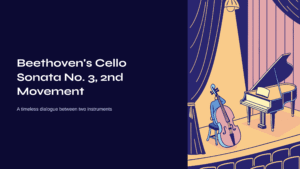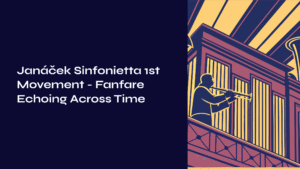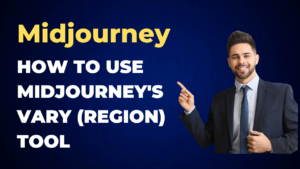Table of Contents
The Thrill of First Encounter
On a winter evening, I stumbled upon a classical CD in the library. The first notes that flowed through my headphones captivated my heart like a ray of light in darkness. The music, which began in quiet contemplation and built to an explosive finale, felt as if it captured the journey of my own life. This was Beethoven’s “Egmont” Overture.
Everyone faces moments in life when they need a breakthrough. During such times, I often found myself reaching for this piece. The message of resistance and hope that the music conveys has always breathed new courage into me. Today, I want to share the story of this special composition with you.
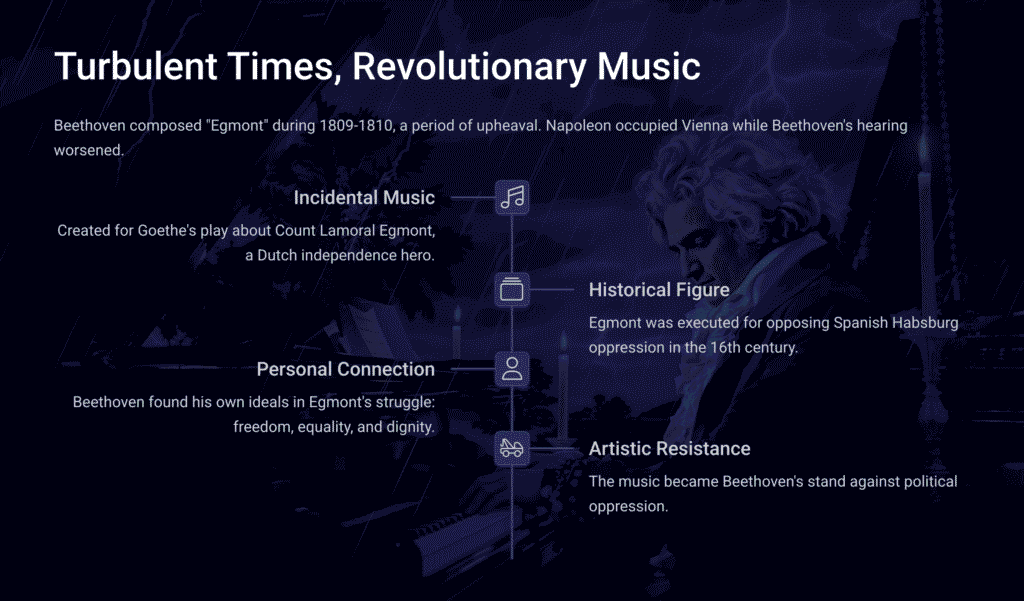
Turbulent Times, Revolutionary Music
The years 1809-1810, when Beethoven composed the “Egmont” Overture, marked a period of upheaval both in his personal life and in European history. Napoleon’s army had occupied Vienna, and Beethoven was suffering from increasingly severe hearing loss.
This work was composed as incidental music for Johann Wolfgang von Goethe’s play of the same name. Goethe’s drama tells the story of Count Lamoral Egmont (1522-1568), a hero of the Dutch independence movement in the 16th century. Egmont was a real historical figure who was executed for standing against the oppression of the Spanish Habsburg monarchy.
For Beethoven, this story was more than just a historical event. He discovered his own ideals in Egmont’s struggle: freedom, equality, and human dignity—values Beethoven cherished throughout his life. His music became an artistic resistance against political oppression.
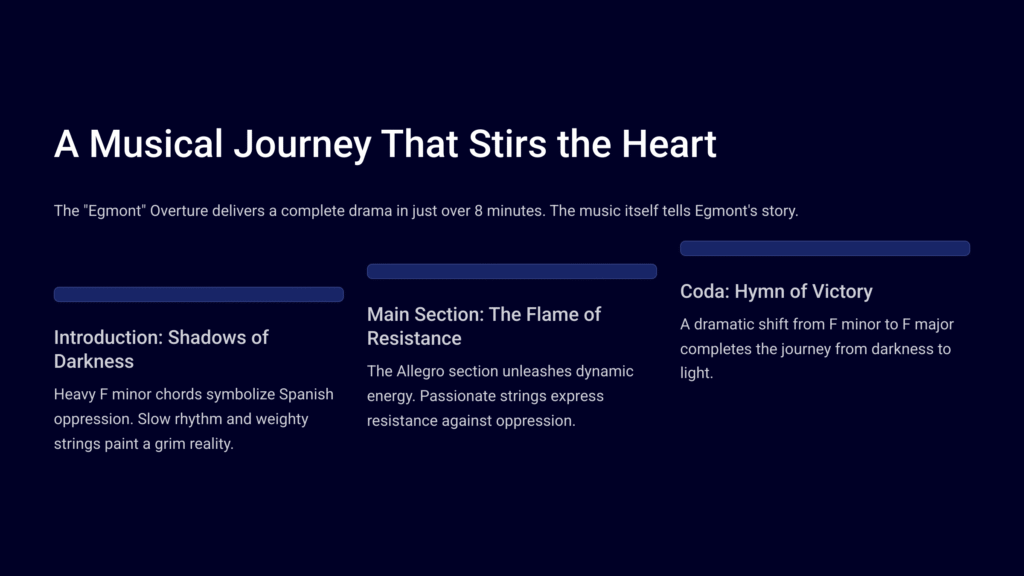
A Musical Journey That Stirs the Heart
The “Egmont” Overture offers a complete drama in just over 8 minutes. Like a condensed version of the play, the music itself tells the story.
Introduction: Shadows of Darkness
The overture begins with heavy F minor chords (Sostenuto ma non troppo), symbolizing Spanish oppression. The slow rhythm in 3/2 time and the weighty string playing paint the grim reality faced by Egmont and the Dutch people. The descending scale in the cellos evokes a feeling of falling into the abyss of despair.
Main Section: The Flame of Resistance
In the main Allegro section, the time signature changes to 3/4, unleashing dynamic energy. The passionate rhythm in the strings expresses the people’s resistance against oppression. The second theme transitions to A♭ major, where woodwinds play a lyrical melody said to symbolize the purity and hope of Klärchen, Egmont’s lover.
Coda: Hymn of Victory
In the climactic coda (Allegro con brio), there is a dramatic shift from F minor to F major—a musical completion of the journey from darkness to light, from oppression to freedom. The triumphant fanfare led by trumpets and timpani instills hope and courage in the listener’s heart. It’s as if Beethoven is proclaiming: “Oppression is temporary, but the spirit of freedom is eternal!”
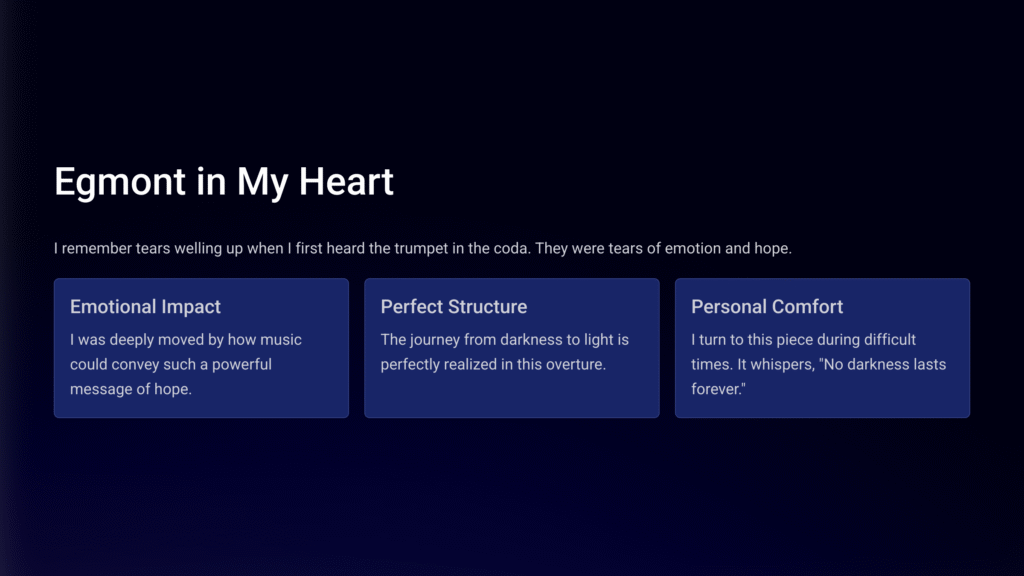
Egmont in My Heart
I remember tears welling up when I first heard the trumpet in the coda. They were not tears of sadness but of emotion and hope. I was deeply moved by how music could convey such a powerful message.
The structural development of this piece—the journey from darkness to light—is a hallmark of Beethoven’s music, yet it seems most perfectly realized in the “Egmont” Overture. This is why I turn to this piece whenever I face difficult times. The music seems to whisper to me, “No darkness lasts forever.”
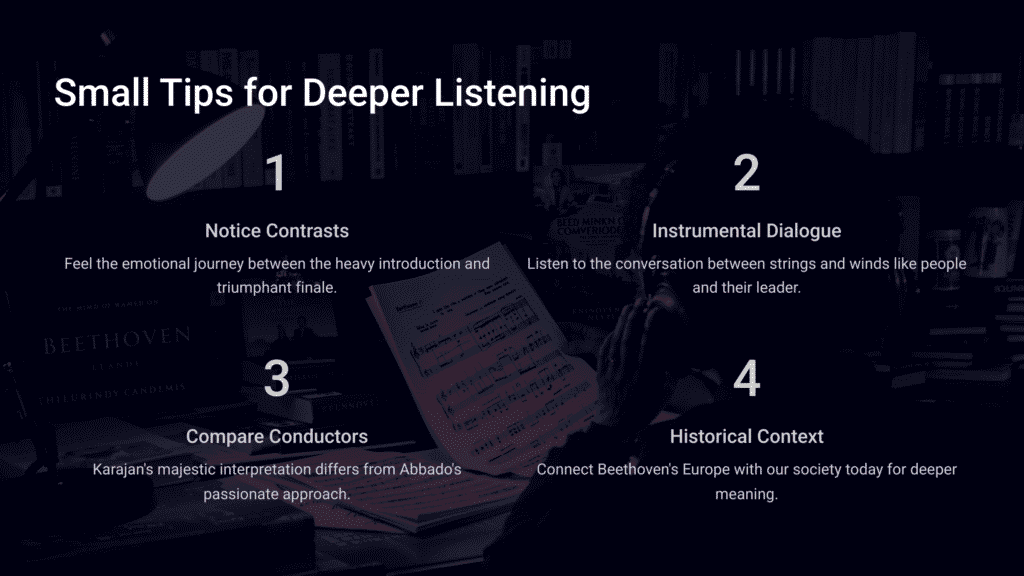
Small Tips for Deeper Listening
Want to appreciate the “Egmont” Overture more fully? Here are a few tips:
- Notice the contrasts: The charm of this piece lies in the contrast between soft and loud. Feel the emotional journey between the heavy introduction and the triumphant final fanfare.
- Listen to the dialogue between instruments: The exchange between strings and winds sounds like a conversation between the people and their leader. Pay attention to how each instrumental group responds to the others.
- Compare different interpretations: The same piece can feel entirely different depending on the conductor. It’s fascinating to compare Karajan’s majestic interpretation with Abbado’s passionate approach.
- Read Goethe’s play alongside the music: Knowing the story behind the music adds depth to your appreciation. Look for how Egmont’s courage and sacrifice are expressed in the music.
- Consider the historical context: It’s meaningful to connect the European situation when Beethoven was composing this piece with our society today.
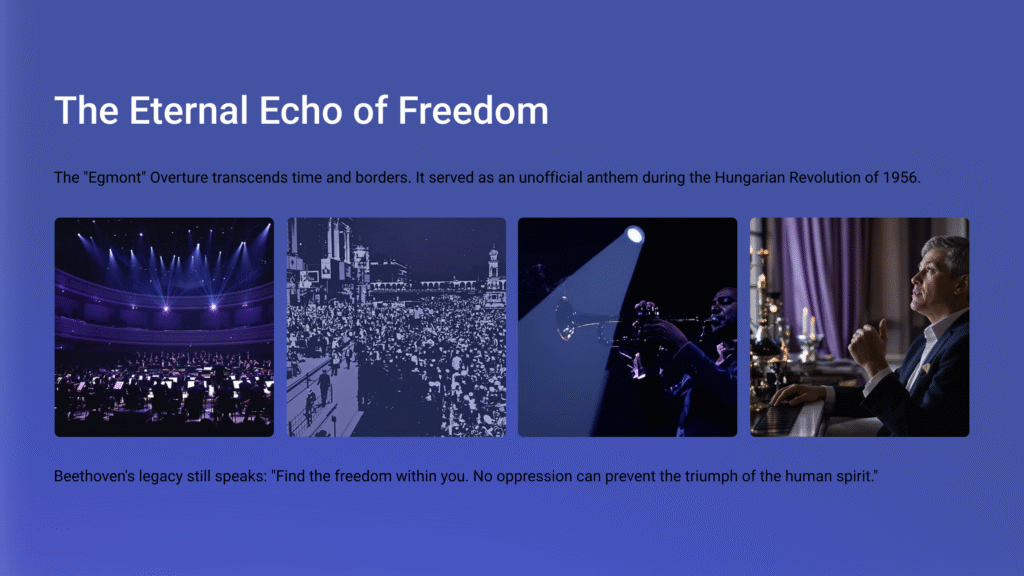
The Eternal Echo of Freedom
The “Egmont” Overture is not just a classical masterpiece. It is a cry for freedom that transcends time and borders. The fact that this piece was used as an unofficial anthem during the Hungarian Revolution of 1956 demonstrates the universal power of music’s message.
This musical legacy left by Beethoven still speaks to us today: “Find the freedom within you. No oppression can prevent the triumph of the human spirit.”
Just as the sound of trumpets through my headphones gives me courage every night, I hope that the “Egmont” Overture brings a small hope and comfort to you who are reading this article. After all, music sometimes perfectly captures emotions that we cannot express in words.
Do you have a piece like “Egmont” in your life? Please introduce your special music in the comments. I hope this becomes a time for all of us to listen to each other’s hearts through music.

